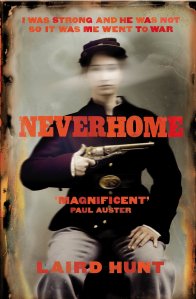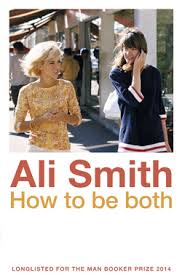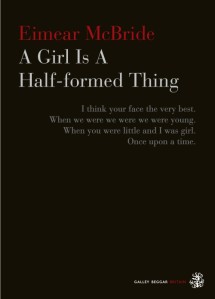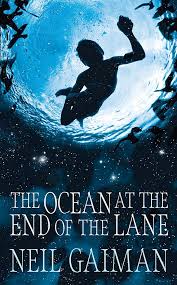 Having previously discussed Stoner, in this post I am continuing with the theme of reviewing reissued literature. This time I am looking at Michel Tournier’s second novel The Erl King, which was first published in 1970.
Having previously discussed Stoner, in this post I am continuing with the theme of reviewing reissued literature. This time I am looking at Michel Tournier’s second novel The Erl King, which was first published in 1970.
The novel intrigued me from the off by opening in a diary format. I am a big fan of stories featuring aggrieved outsiders raging against the world via a diary, such as Gogol’s Diary Of A Madman and, of course, Dostoyevsky’s Notes From The Underground. This particular diary is recorded by a middle aged French mechanic in 1939, an ominous year…
The protagonist, Aubrey Tiffauges, begins by reminiscing about his miserable childhood spent as a submissive student at St. Christopher’s, a boarding school for orphans. Over the course of his recollections he introduces us to his obsession with his former classmate the ‘baby ogre’ Nestor.
Nestor is the deformed son of the school care taker. His age is undetermined and hard to judge due to his unconventional physical appearance, he appears to be a boy albeit with an oversized head, but his worldliness suggests that he is much older than the children who surround him.
Due to these factors he enjoys an uncommon prestige amongst his classmates and possesses a certain immunity from being disciplined by faculty members. When Nestor decides to take the young Tiffauges under his wing, he sow’s the seeds of his future fascination.
The aforementioned diary entries issue from the left hand of Aubrey Tiffauges. He finds that using his left hand to write has unexpected consequences. Long forgotten or repressed memories are revealed to him along with new philosophies and realisations. He collectively terms these revelations as his ‘sinister writings’.
The author uses these sinister writings to establish a set of symbols and tropes which are repeatedly reconfigured, recombined and inverted throughout the novel. The text recurrently cannibalises itself and then regenerates its narrative through this consumption, much as the main character Tiffauges consumes the imagery he fixates on and so becomes it.
The first example of this is found in Tiffauges’ belief that he is an avatar of the tragically departed Nestor who we discover died in a fire some years previously. Fitting with the author’s approach and main characters obsession with inversion, the adult Tiffauges stands as a physical and mental counterpoint to Nestor. He is a giant of a man possessed with an if not entirely infantile, certainly pubescent, understanding of his surroundings.
His impairment is hard to explain as he possesses an extensive vocabulary and expresses complex thoughts, yet he seems to be alienated from his surroundings by what could best be described as a sort of adolescent innocence. He is at once vulnerable and megalomaniacal.
Tiffauges reveals that he has taken to eating raw meat and believes himself to be an ogre or monster. That is a monster in the Latin sense of monstrum, a portent or divine warning which reveals a truth, as well as in the modern vernacular sense of large or deformed. Tiffauges is certainly large and most definitely socially deformed.
A diary entry of Tiffauges’ states: ‘if you don’t want to be a monster, you’ve got to be like your fellow creatures, in conformity with the species, the image of your relations. Or else have a progeny that makes you the first link in the chain of a new species. For monsters do not reproduce… And here I link up with my eternity again, for with me eternity takes the place of both relatives and progeny. Old as the world, and as immortal, I can have none but putative parents and adopted children.‘
Children play a central role in Tiffauges’ symbolic universe as is indicated by the books title The Erl-King which references the child stealing Faery King of Goethe’s poem, itself inspired by the Old Danish ballad Elveskud. The alternative title to the English translation of this novel is The Ogre one which also invokes images of children being forcibly removed from their parents by monstrous beings.
Over the course of the novel we witness Tiffauges obsession with at first children, then specifically male ones. We follow Tiffauges around Paris as he photographs children and obsesses over these images, lurking outside schools to capture his quarry on film which he later develops to pore over. Again we see the themes of inversion present in the development of photographs from negatives film to positive photographs, as well as themes of hunting which will recur.
Over the course of these outings he befriends a young girl. What happens next is open to interpretation depending on how reliable a narrator we believe Tiffauges to be. All we know is that Tiffauges’ is accused of raping the child, although there is much room in the text to believe that he is some way set up or framed.
This incident results in Tiffauges revulsion with female children a view he justifies with misogynistic argument that female children do not exist as they are all flirtatious coquettes from the get go. Could this be a paedophilic justification? Or misguided as it is does it suggest a rather more complex obsession and affinity with pre-sexual innocence? The character does not yield to easy analysis.
Tiffauges’ fascination with children is certainly sensual, he is obsessed with their scent, their sound and bizarrely their weight or phoric quality, but whether it is sexual is certainly debatable. He is for want of a better term, ‘Michael Jacksonesque’.
Tiffauges’ escapes sentencing for the rape due to the outbreak of World War Two and is sent to serve in the French army in lieu of prison time. This set a chain of events into motion where Tiffauges ends up a prisoner of war and is transferred to a prison camp in East Prussia. At this point the novel switches from a first person to a third person narrator.
Tiffauges finds his fortune changes under the chaotic circumstances of war. His skills as a mechanic enable him to begin a social ascent amidst the chaos of war, soon he is employed in Goering’s hunting lodge and then on to a National Political Academy or Napola where he becomes a eugenicist’s assistant.
Each change in circumstance moves him closer and closer to actualising his potential as an ogre superseding other ogres along the way. His employment at the Napola involves him scouring the Prussian country side looking for Aryan specimens to recruit and study; he literally steals children away from their parents. Yet there is always a larger ogre than the one he supersedes be Goering, Hitler or even Nazism itself.
Towards the end of the novel Tiffauges find a sort of redemption in the Christian trope of St. Christopher, the legendary Christ carrier. In the figure of St. Christopher Tiffauges’ finds an ogre role model of sorts and achieves quasi-atonement.
Like many French writers the author has a fascination with the ludic elements of linguistics and semiotics. And like many French writers, particularly those active in the 1970’s, Tournier relishes giving these elements free reign , sometimes to the frustration of the reader who at times may find the ludic veering perilously close to the ludicrous.
Tournier seems to want to say something about obsession, sexuality, myth, semiotics and the nature of fascism yet never quite gets around to it, opting instead for the effect of juxtaposing these elements rather than an analysing them.
The Erl King is also an uneven and often frustrating novel in terms of pace. I found the parts of the novel narrated in the first person to be much more successful than those narrated in the third person and regretted when the action moved outside of Tiffauges diary.
Yet for all these flaws it is hard to dismiss The Erl King entirely. It’s singular and odd parts add up to a distinctive and strangely haunting whole. The protagonist is one of the more distinctive and unsettling characters I have come across in a while.
I have spent much time puzzling over and pursuing the novels various thematic strands.I plan to reread it at some stage in the future to see if a second reading yields any more clarification. If one has the patience for such a book or merely enjoys the weird in life I recommend reading The Erl King.
 Set during the American civil war Neverhome tells the story of gallant Ash Thomson, a married farmer who joins the Union Army in search of adventure. What makes Ash’s story stand out from the thousands of young men who followed a similar path is the fact that Ash is a woman.
Set during the American civil war Neverhome tells the story of gallant Ash Thomson, a married farmer who joins the Union Army in search of adventure. What makes Ash’s story stand out from the thousands of young men who followed a similar path is the fact that Ash is a woman.


 The other Murakami
The other Murakami

 Howard Jacobson’s latest novel J, tells the story of two lovers Ailinn and Kevern, each unsure of their respective origins, who are thrown together by circumstance in a dystopic future Britain. Before I proceed I think it is only fair that I include a spoiler alert as it is very difficult to discuss this novel in a meaningful way without disclosing aspects of the plot which only become apparent as the story proceeds.
Howard Jacobson’s latest novel J, tells the story of two lovers Ailinn and Kevern, each unsure of their respective origins, who are thrown together by circumstance in a dystopic future Britain. Before I proceed I think it is only fair that I include a spoiler alert as it is very difficult to discuss this novel in a meaningful way without disclosing aspects of the plot which only become apparent as the story proceeds. Taking its title from the famous Basho poem, Richard Flanagan’s Man Booker Prize 2014 winning novel The Narrow Road to the Deep South tells the story of working class boy done good Dorrigo Evans, surgeon, war hero, and national celebrity.
Taking its title from the famous Basho poem, Richard Flanagan’s Man Booker Prize 2014 winning novel The Narrow Road to the Deep South tells the story of working class boy done good Dorrigo Evans, surgeon, war hero, and national celebrity.
 Ambitious in its scope, All That Is tells the story of Philip Bowman from his youth to middle age taking in a few key moments of the twentieth century along the way. Using an impressionistic approach, Salter takes us on a tour of privileged post-war white East Coast America.
Ambitious in its scope, All That Is tells the story of Philip Bowman from his youth to middle age taking in a few key moments of the twentieth century along the way. Using an impressionistic approach, Salter takes us on a tour of privileged post-war white East Coast America.








